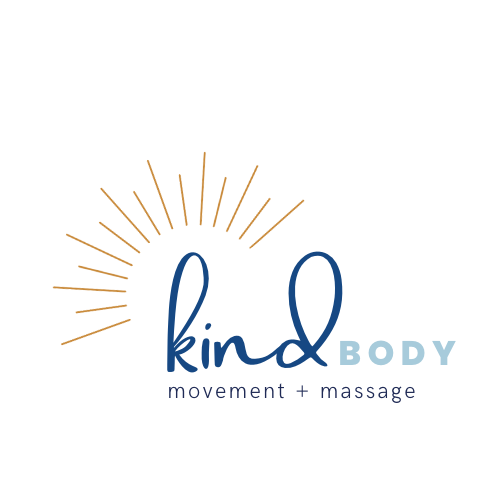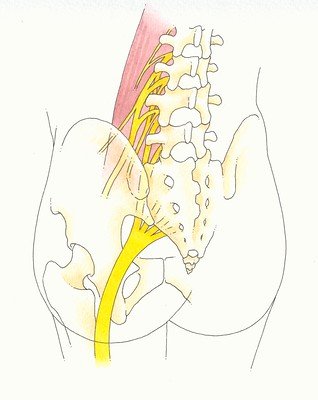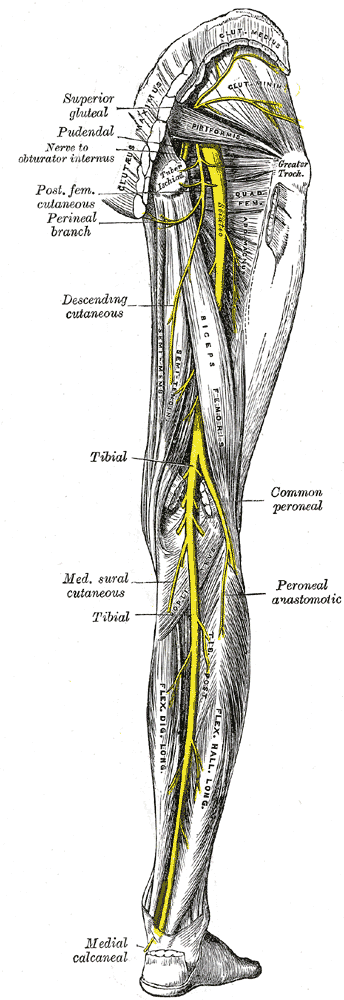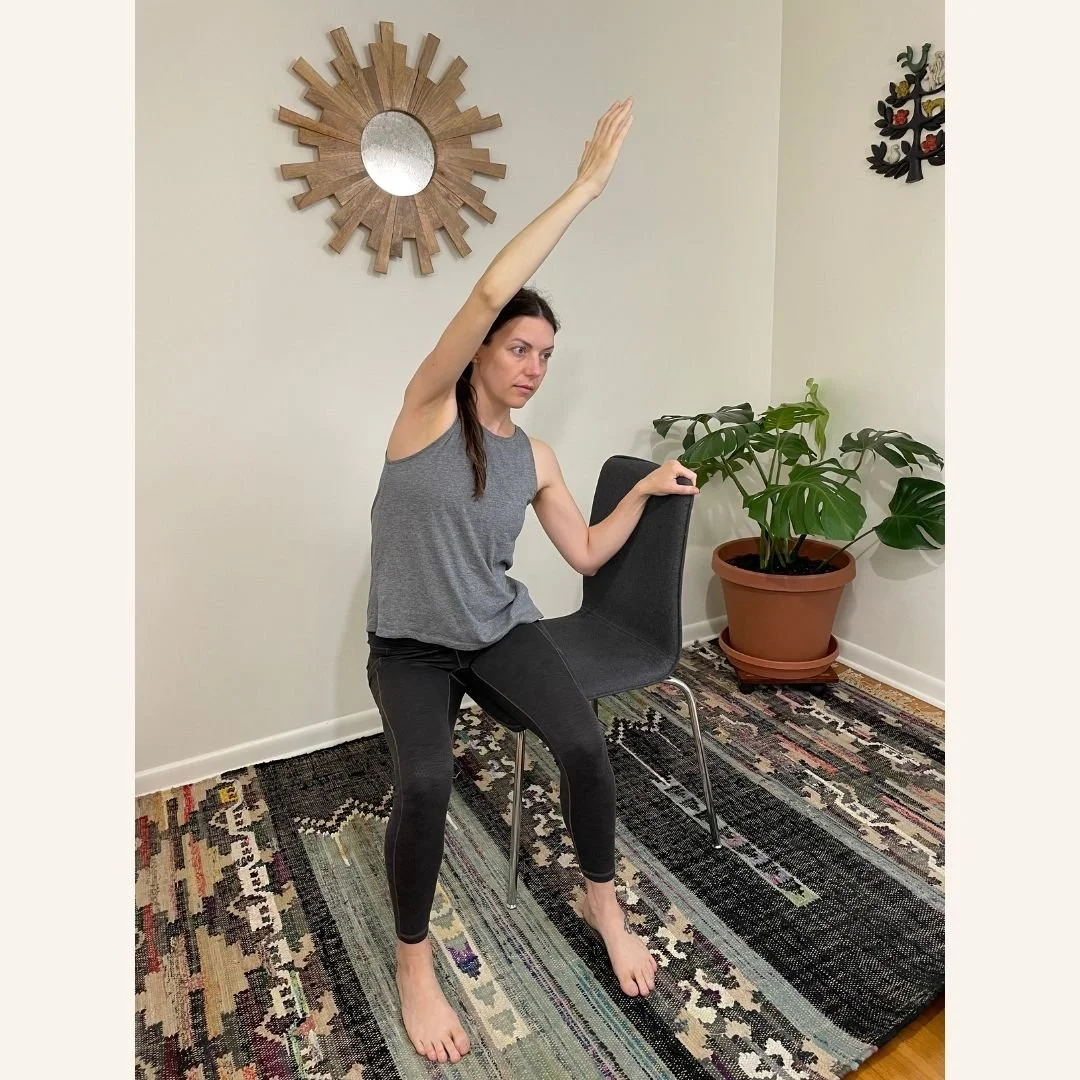11 Exercises for Sciatica Pain Relief
Help for sciatic nerve pain.
Sometimes I link to products I love. As an Amazon Associate, I earn a commission from qualifying purchases.
I was just walking through the grocery store, minding my own business, when I felt a sharp pain and my hip buckled. I almost fell over!
My fellow shoppers gave me the side eye and one older woman clenched my forearm, looked down at my swollen belly and asked, “Are you okay sweetie?”
“Yes, I’m fine, thank you. It’s just sciatica,” I answered, as a deep ache in my hip replaced the sharp pain.
The woman shook her head knowingly and proceeded to tell me all about her current struggles with sciatica. (Does this oversharing among strangers only happen in the South?)
I endured sciatica during both of my pregnancies and, for the most part, the pain resolved itself after giving birth.
Sciatica doesn’t just affect pregnant people, however. It’s a relatively common condition that some folks experience at least once in their lifetime.
As a massage therapist, I work with a handful of clients managing chronic sciatica or who are experiencing it for the first time.
In this post, we’ll explore common causes of sciatica and easy self-care exercises you can experiment with for sciatica pain relief.
©KindBody Movement, LLC
What is sciatica?
Sciatica is a kind of nerve pain that follows the path of the sciatic nerve.
The sciatic nerve runs from the lower back, through the hips and buttocks, and all the way down each leg. Sciatica pain can radiate along this path and usually only affects one side of your body at a time.
This photo shows the group of nerves that emerge from the lower spine. The thick yellow nerve that continues into the pelvis is the sciatic nerve. Illustration by Alice Roberts.
What causes sciatica?
Common causes of sciatica can include:
Herniated disk
Narrowing of the spine
Piriformis syndrome
Injury
Issues like a herniated disk, bone spurs on the spine, or a narrowing of the spine (AKA spinal stenosis) compress part of the sciatic nerve and cause inflammation, pain, and numbness in the affected leg.
The sciatic nerve runs right under a hip muscle called the piriformis. If the piriformis is irritated or inflamed, it can also affect the sciatic nerve, resulting in sciatica-like pain. Things like trauma to the hip or buttock area, muscle hypertrophy (often seen in athletes during conditioning), and sitting for long periods of time can cause piriformis syndrome.
Pro tip: If you’re experiencing sciatica-like pain AND you sit with your wallet in your back pocket, try removing your wallet before sitting down. The added bulk could be irritating your piriformis and, in turn, your sciatic nerve.
The sciatic nerve and its branches are noted in yellow. It travels from the lower back all the way down the leg.
What does sciatic nerve pain feel like?
Sciatic nerve pain can feel different from body to body and may change or morph based on your activities. If you’re experiencing sciatic nerve pain, you might feel…
A burning sensation,
Numbness,
Weakness,
A dull ache,
Pins and needles, or
An electrical shock, anywhere along the path of the sciatic nerve.
A handful of my clients also report experiencing a dull ache that radiates around to the front of the thigh and even to the side of the shin.
What can I do for sciatica pain relief?
If the pain isn’t too severe, it’s best to stay active and keep moving—especially because prolonged sitting (or standing) can make the pain worse. Sometimes taking a gentle stroll can help. Obviously avoid any positions or activities that make the pain worse.
When sitting, be sure to find neutral with your pelvis. Avoid tilting your pelvis forward (as in the first picture) or back (as in the 3rd picture). ©KindBody Movement, LLC
Because sciatic nerve pain can originate with an issue in the lower back (like with a herniated disc), it makes sense to take care of your back as a means of prevention and treatment. Daily low back maintenance activities might include…
Posture checks while sitting and standing
Feel-good stretching
Weight bearing exercise
Strengthening the muscles of the core and hips.
Many of the exercises shared online for sciatica pain relief focus solely on the hips and legs. My list includes a few hip and core strengthening exercises as well.
Exercises for Sciatica Pain Relief
01: Seated side stretch
Sit sideways on the edge of a chair so that one hip is floating. Allow the floating hip to sink toward the ground any amount. Raise the same side arm and lean toward the chair back. Take full, deep breaths. Repeat on both sides.
02: Rib slides
With hands on hips as a reminder to keep the pelvis centered, slide the rib cage back and forth (left to right). The rib cage should simply shift side to side as opposed. Avoid doing a side bend as in the previous exercise.
03: Supported bridge
Place a yoga block under the pelvis. You may prefer to keep your knees bent, feet on the ground —OR— you may prefer to straighten the legs. Choose the most relaxing position.
04: Prone leg lifts
Place a rolled blanket just below the bony points of the pelvis (in the hip crease). This is a reminder to keep the pelvis and lower spine in a stable, still position. Lift and lower one leg at a time away from the ground. Be sure to just use the range of motion of the hip—if you max out the ROM of the hip and continue to lift the leg, the lower spine will bend. Keeping the lower spine still and stable will focus the work of this exercise into the hip muscles, helping to build strength.
05: Knee to chest
Lie down on your back and pull one leg to the chest. Take a few deep breaths and switch to the other side. You may also hug both knees to the chest at once.
06: Knee to opposite shoulder
Lie down on your back and bring a knee up and across the torso, so it points toward the opposite shoulder. Take a few deep breaths and repeat on the other side.
07: Hamstring stretch with strap
Lie down on your back and place a strap around the ball of the foot. Extend the leg straight and lift it away from the ground any amount until you feel a stretch on the back of the leg. Repeat on both sides.
08: Figure 4 stretch
Lie down on your back, knees bent, feet on the floor. Cross the right ankle over the left thigh. If you feel a nice stretch in the outer right hip, stay here. To increase the stretch sensation, lift the left foot off the ground. Clasp hands on the front of the left shin or the back of the left thigh to hold the stretch. Repeat on both sides.
09: Moving reclined twists
Lie down on your back with bent knees. Gently rotate the spine as you move the knees to one side. Then reverse directions and move the knees to the other side. Go back and forth, moving through a comfortable range of motion.
10: Sciatic nerve glide
Lie down on your back and hold the back of the knee. Then, try to straighten the knee. Keeping the knee as straight as possible, bend the ankle forward and backward (flex and point the foot). Repeat 10 times.
11: Bird dog
Start in hands and knees position. Slide one knee back and eventually lift that leg away from the ground. Remember to only use the range of motion of the hip; you might not be able to lift the leg as high as you think. If the lower spine bends or the pelvis tilts, you’ve lifted too high. Then, lift the opposite arm away from the ground and extend it forward. Hold for a few breaths and repeat on the other side.
Holistic Pain Relief
A body’s experience of pain isn’t determined solely by tissue damage. Things like your beliefs about pain, how supported you feel, and your overall stress level can influence the pain you experience.
When managing pain, it can be helpful to ramp up your general self-care. Things like staying hydrated, eating well, getting enough sleep, plugging in to your community, and making time for things that bring you joy can make a painful episode feel more manageable.
Conclusion
Sciatic nerve pain can really suck. Thankfully, it can also be really easy to treat. For many bodies, time, a few general self-care exercises, and maybe a massage from a therapist skilled in treating low back pain can be enough to provide relief. If, however, you’ve been experiencing even mild sciatica for a month or more, it’s time to get in touch with a physical therapist who can offer you a personalized treatment program.



















